Story of Burundian Coffee in African Coffee producing area proportion and Flavor of African Heart Coffee beans
Professional coffee knowledge exchange more coffee bean information please follow the coffee workshop (Wechat official account cafe_style)
In Burundi, a niche coffee producer in Africa, Qianjie Coffee has always been on the shelves with an African heart from Bloom. Through the cup test in the front street, it is found that compared with Ethiopian coffee beans and Kenyan coffee beans, Burundian coffee is not as sour as Ethiopian coffee producing areas, nor does it have the mellow juicy feeling of Kenyan coffee producing areas. Next, let's talk about Burundian coffee on the front street.
Burundi
Burundi is a member of the East African Community (EAC) and the Great Lakes region (GLA), formerly known as Ulondi, located in the interior of Central Africa, small territory and rolling hilly beauty, is the crossroads of Central and East Africa, but also the great watershed between the Nile and the Congo River, has always been known as the "Heart of Africa], the capital Bujumbura is located on the banks of the magnificent Lake Tanganyika The Great Lake is also the country's natural border with Congo and Tanzania. Burundi has high topography and varied elevations, ranging from 700m at the lowest to 2670 m at Mount Iya.
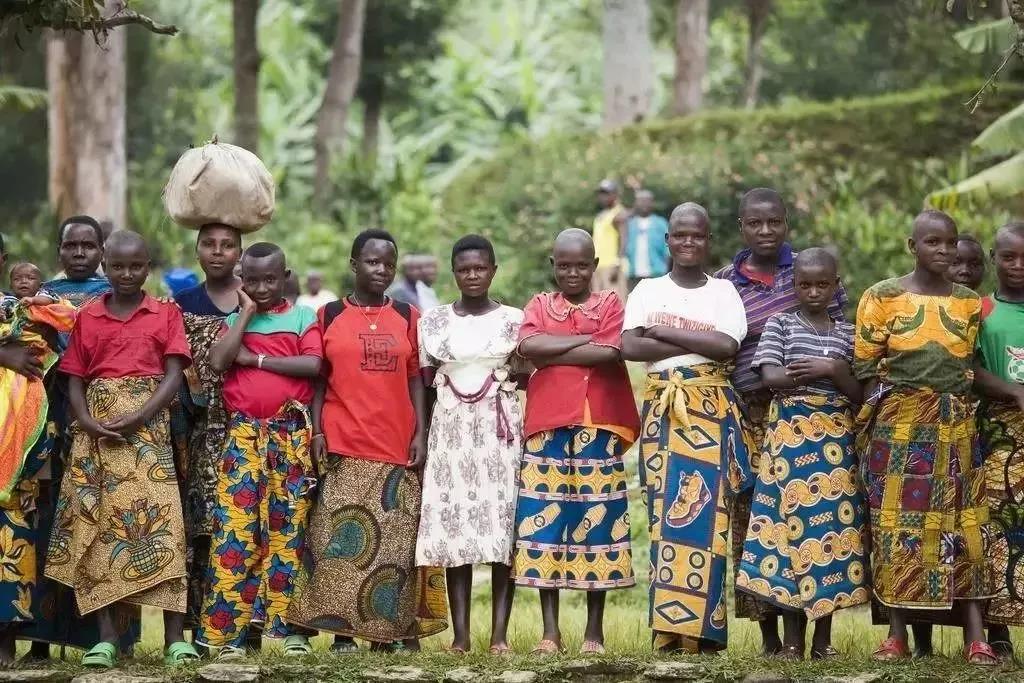
Coffee cultivation in Burundi
Since 1993, due to the devastation of civil war, lack of funds, planting technology and other factors, the impression of Burundian coffee in the international market has always remained in the "inexpensive, average quality" African coffee beans. In addition, compared with other coffee-producing countries in Africa, Burundi's lack of export ports for inland transport costs, lack of transparency in origin consultation and complex export procedures have put Burundi in front of the boutique coffee market. Like coffee in most backward areas, the flavor of Burundian coffee is never "fresh and lovely". It can't bring you a bright spring breeze. Qianjie believes that Burundian coffee is slightly heavy, rich and complex, but fragrant, sometimes strongly sour, sometimes soft sweet.
East Africa has always been a high-quality coffee civilization, and the land of Burundi has not been forgotten. The outline of this territory is similar to that of the landlocked African country in the heart, so Burundi is also known as the "Heart of Africa". With excellent volcanic soil, a varied microclimate, and nearly 1200 mm of annual rainfall, all of these provide excellent prerequisites for coffee cultivation. The climate of Burundi is usually a "tropical" plateau climate with a very large temperature difference between day and night. The colonists found that bourbon was the most suitable coffee variety to grow in the local climate. However, due to the suspension of investment in coffee research, bourbon became the only coffee variety left in the country. And has been using the "full water" treatment.
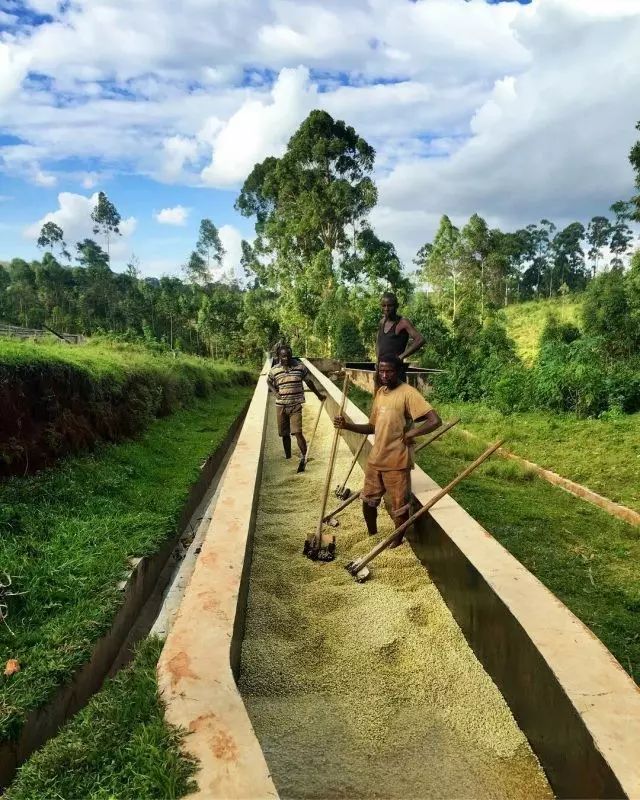
The geographical environment of Burundi is very suitable for coffee cultivation. There is no coffee farm in the country, and its coffee planting industry is carried out entirely in the form of small family farms, with great differences in quality, and perennial war and social unrest also make its coffee planting industry very chaotic. But I have to admit that it has the potential to produce high-quality coffee.
Since 2008, Burundi has begun to transform towards a boutique coffee industry, leading to the emergence of more procurement methods such as direct trade and traceability of origin. In 2011, Burundi held a coffee quality competition called the prestige Cup (Prestige Cup), which was also conducted before the formal holding of the more large-scale Cup of Excellence Cup. Coffee beans from various wet treatment plants are stored separately, ranked by quality, and then sold at auction. All coffee beans have production and marketing experience. It also means that unique high-quality coffee beans from Burundi will gradually appear on the market, which will be of great help to the improvement of quality.
Five major coffee producing areas in Burundi
1. Buyenzi
This growing area is located in the high mountains of the north near the border with Uganda and is an essential producer of Burundian coffee. The most famous producing areas are Cayansa and Ngoji, both of which are between 1700 and 2000 meters above sea level. The main rainy season begins in March and April, and the average annual temperature is 18: 19 ℃ in July after harvest. The low temperature at night continues into the early morning, which is the main reason for the bean aroma and solid bean density.
Second, odd leap degree (Kirundo) & cloth to Sheila (Bugesera)
Qilun degree is equivalent to close to the border of Uganda. The coffee production in these two areas is relatively low, about 1400-1700 meters above sea level. Under the influence of the Cayansa producing area, coffee has gradually moved closer to the production of high-quality batches, and there is a good result of the final of the water washing field in the Zhuoyue Cup competition.
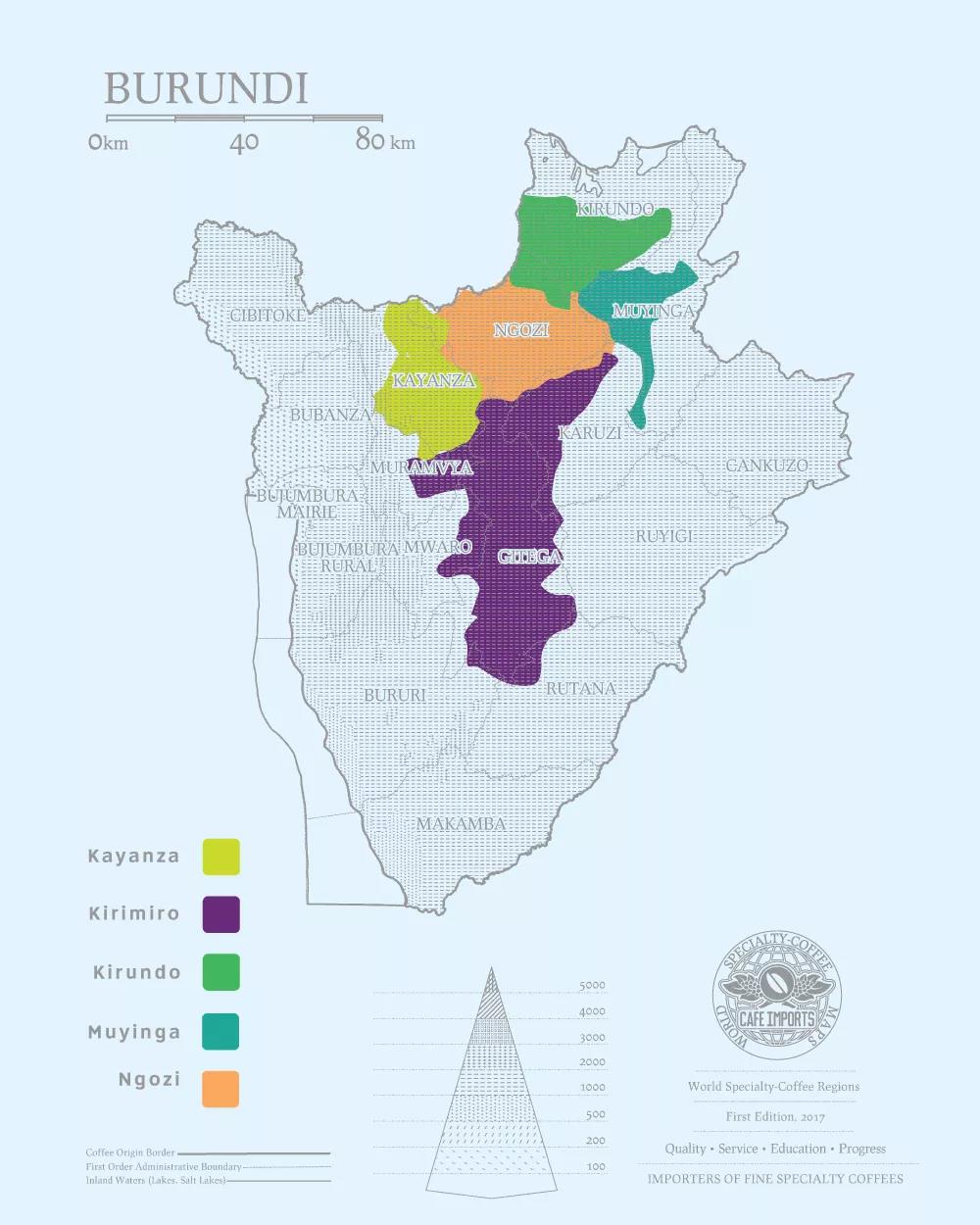
3. Muyinji (Muyinga) & Buyale (Bweru)
These two districts are in the east and northeast, about 1800 meters above sea level. Muyansa is closer to the border of Tanzania, but its flavor is slightly better than that of Cayansa, which varies because of its milder climate and brighter acidity.
4. Gitega & Kirimiro
It is located in the high-altitude mountain area in the middle of the country, the average annual temperature is also low, about 12-18 ℃, and the annual rainfall is relatively low, only about 1100mm, which also results in low yield.
5. Bubanza & Mumirwa
These two areas are located on the border between Uganda and the Republic of Congo, with elevations ranging from 1100 meters above sea level to 2000 meters above sea level. The annual rainfall is only 1100 kilometers, and the average annual temperature at low elevations is about 20 ℃, which affects the quality of coffee. There is an opportunity to produce fine coffee at high altitudes, but the distribution and lack of rainfall affect the production of this area.
Burundian coffee bean varieties
Bourbon coffee was originally grown on the island of Reunion, which was also known as le Bourbon before 1789. Bourbon, the second species caused by the Typica mutation, is the oldest coffee variety in existence, and the green fruit appears bright red when it is ripe. After red bourbon general coffee trees blossom and bear fruit, the color change of coffee fruit is from green > to yellowish > to light orange > to ripe red > to ripe dark red. Bourbon planted at high altitude usually has a better aroma, while the acidity is brighter, and it even tastes like red wine.
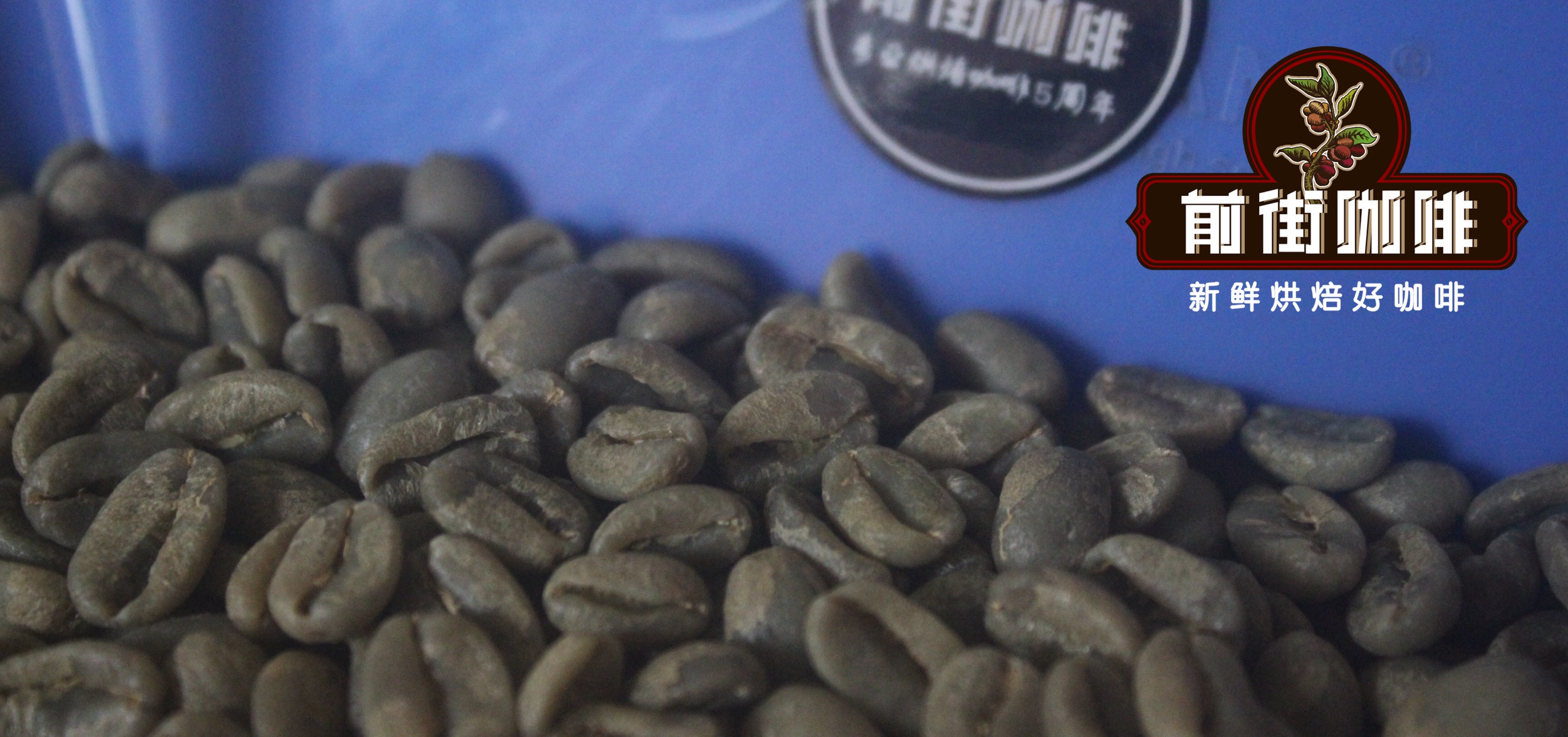
Burundian coffee bean treatment
There are two methods of washing treatment in Burundi. One is hand-washed by farmers themselves and then handed over to the washing plant, which is called manual washing and marked as "washed". The other is to directly hand over the fruit to the washing plant and mark it as "fully washed".
Manual washing is completely manual removal of peel, pulp and pectin. Qianjie Coffee mentioned earlier that producers' mistrust of buyers, including mistrust of the processing plant, led to the Cajun Association thinking that the purchase price of the treatment plant was not true, and the price of directly trading the fruit was not good enough. I would rather handle the coffee myself and fight for more bargaining space with the processing factory. But the problem is that most farmers rely on bare hands, lack the use of tools, and often work on dusty roadsides, which inevitably affects the quality of coffee. However, since the opening of the spunlace treatment plant for privatization, the Burundian government has encouraged the harvest to be handed over to professional treatment plants.
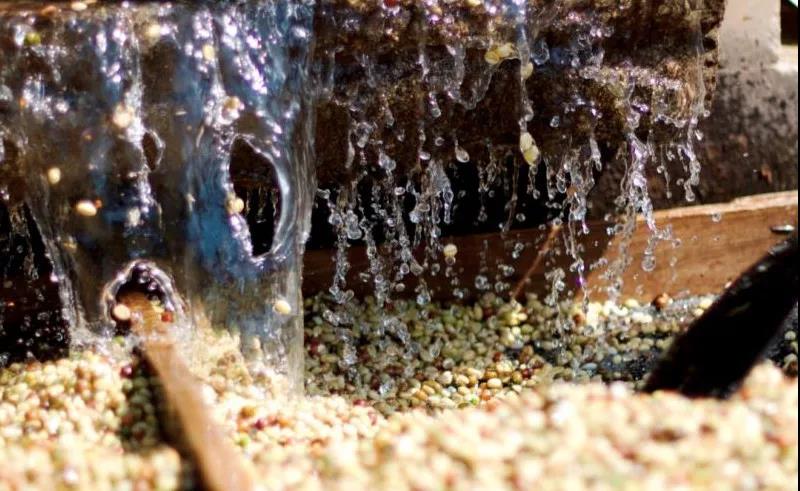
Burundi has also developed a water washing treatment similar to that of Kenya-double water washing and fermentation. First, put the harvested fruit into a large tank, select the fruit with good density by buoyancy, then remove the peel and pulp by machine, enter the fermentation tank for about 18 hours, pour the fermented fruit into clean water the next day, and continue to ferment for 18 hours. a total of about 36-48 hours. Then wash the fruit clean, remove the pectin layer softened by hairspray, and finally enter the drying process. The first stage of drying should be shaded and air-dried to avoid direct exposure to hot sunlight, the moisture content will be less than 40%, move to the scaffolding for natural sun exposure, and the moisture content will reach 11%.
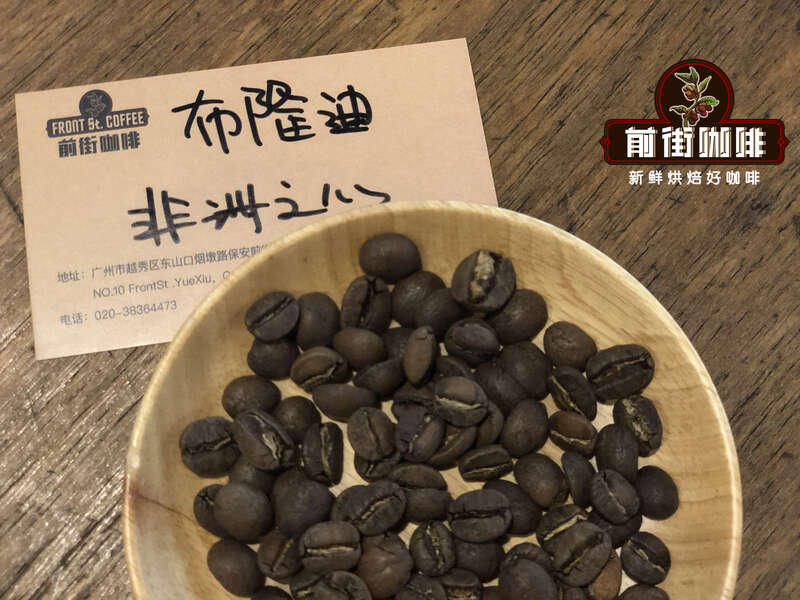
Front Street Coffee-Heart of Africa Burundi
Producing area: Luthona town
Altitude: 1400 m to 1700 m
Variety: bourbon
Treatment: washing treatment
Luturner town
The Burundian coffee bean on the front street comes from the town of Reuters. The origin of the town of Reuters, which is a cooperative organized by small family coffee farmers, has a total of 539 small coffee farmers, of whom 148 are women. on average, each family grows 10,200 coffee trees (at least 1000 coffee trees per hectare), which shows its weak annual income and is a typical poor small coffee farmer family.
Suggestion on roasting Burundian coffee beans on Qianjie coffee
Qianjie Coffee can be said to be almost flawless when it gets the raw beans of Burundian coffee, and its size and water content are quite even. the high altitude growth environment makes Burundian coffee beans produce brighter acidity and lemon flavors. it also has the flavor of passion fruit, pineapple, flower and honey.
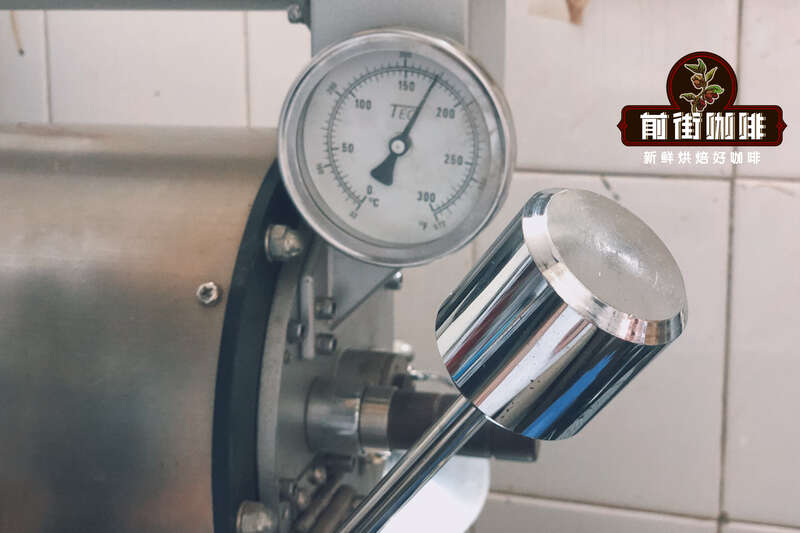
The front street baker uses Yang family 800N semi-direct fire, the amount of beans is 480g: the furnace temperature is 200 degrees Celsius, the throttle is set at 3 degrees Celsius and steamed for 1 minute, the firepower is 160 degrees, the furnace temperature is 160 degrees, the firepower is reduced to 130 degrees, baked to 5 degrees 35 ", the temperature is 152 degrees, the bean watch turns yellow, the smell of grass disappears completely, dehydration is completed, and the throttle tune 4. In the 9th minute, ugly Hu wrinkles and black markings appear on the bean table, and the smell of toast obviously changes to the smell of coffee, which can be defined as a prelude to an explosion. at this time, listen clearly to the sound of an explosion point, to 9: 10 "to start an explosion, the small firepower remains the same. The throttle is fully open at 5 degrees (the firepower should not be so careful that there is no cracking sound) 40 degrees, 196.5 degrees into the pot.
Report on testing Burundian Coffee beans in Front Street Coffee Cup
Qianjie Coffee will be tested within 8-24 hours after the sample beans are roasted. The cup commonly used by baristas in front street is a ceramic bowl with a capacity of 200ml. The water temperature used in the cup test is 94 °. The pass rate of 20 # standard screen (0.85 mm) controlled by grinding degree is 70% Mel 75%. Ratio: 11 grams of coffee powder and 200 milliliters of hot water, that is, 1VR 18.18, so that the concentration of the extract is exactly within the range of 1.15% Murray 1.35% gold cup, and the soaking time is 4 minutes.
Dried fragrance: citrus
Wet fragrance: citrus, Brin
Flavor: Brin, kumquat, lemon, dried fruit, caramel, tea, sour light
Qianjie cooking parameters
Qianjie coffee should be reminded that when you get freshly roasted coffee beans, don't brew them for three or four days before brewing, then the flavor of the coffee will really come out.
Water temperature: 90-91 degrees
Degree of grinding: BG#6m (fine sugar size / 20 sieve bowl sieve powder to 80%)
Ratio of powder to water: 1:15
Amount of powder: 15g
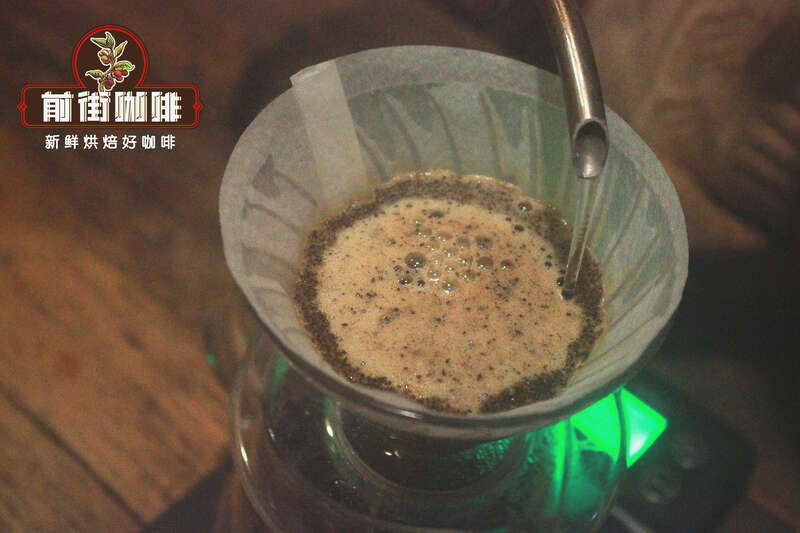
Qianjie coffee is extracted by stages, that is, three-stage water injection, 30 grams of water stuffy steam for 30 seconds, the second small flow circle water injection to 125 grams of water cut off, waiting for the water to drop and then slowly water injection, the speed is uniform, the water level should not be too high, the water injection should be stopped at 225 grams again, and the extraction time is 2 minutes (including steaming time).
Brewing flavor: it smells of mandarin and tea, imported black brine, mandarin flavor, rich taste, and the sweetness of nut caramel in the middle and back. The taste is full of wild, strong taste and aroma remain in the mouth, and the finish is rich and lasting.
For more boutique coffee beans, please add private Qianjie coffee on Wechat. WeChat account: kaixinguoguo0925
Important Notice :
前街咖啡 FrontStreet Coffee has moved to new addredd:
FrontStreet Coffee Address: 315,Donghua East Road,GuangZhou
Tel:020 38364473
- Prev
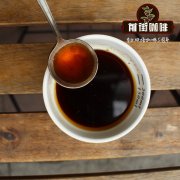
How about Indonesian coffee beans? how to drink Indonesian coffee? What kind of coffee is good in Indonesia?
Professional coffee knowledge exchange more coffee bean information please follow the coffee workshop (Wechat official account cafe_style) there are more than 50 coffee-growing countries in the world, you will find that most of them are grown in the coffee belt area. This area, as its name suggests, surrounds the earth and covers parts of the Americas, Africa and Asia. The coffee belt is mainly located in the equatorial area.
- Next
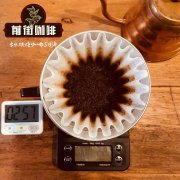
How to choose fresh coffee beans? eat fresh coffee beans directly? how much is a pack of fresh coffee beans?
Professional coffee knowledge exchange more coffee bean information Please follow the coffee workshop (Wechat official account cafe_style) many friends left messages saying that they would not choose fresh coffee beans, or did not know how to tell whether the coffee beans they bought were fresh, so today the editor happened to talk about how to choose fresh coffee beans. The next time you buy coffee, you will not be afraid to buy bad coffee.
Related
- Detailed explanation of Jadeite planting Land in Panamanian Jadeite Manor introduction to the grading system of Jadeite competitive bidding, Red bid, Green bid and Rose Summer
- Story of Coffee planting in Brenka region of Costa Rica Stonehenge Manor anaerobic heavy honey treatment of flavor mouth
- What's on the barrel of Blue Mountain Coffee beans?
- Can American coffee also pull flowers? How to use hot American style to pull out a good-looking pattern?
- Can you make a cold extract with coffee beans? What is the right proportion for cold-extracted coffee formula?
- Indonesian PWN Gold Mandrine Coffee Origin Features Flavor How to Chong? Mandolin coffee is American.
- A brief introduction to the flavor characteristics of Brazilian yellow bourbon coffee beans
- What is the effect of different water quality on the flavor of cold-extracted coffee? What kind of water is best for brewing coffee?
- Why do you think of Rose Summer whenever you mention Panamanian coffee?
- Introduction to the characteristics of authentic blue mountain coffee bean producing areas? What is the CIB Coffee Authority in Jamaica?

